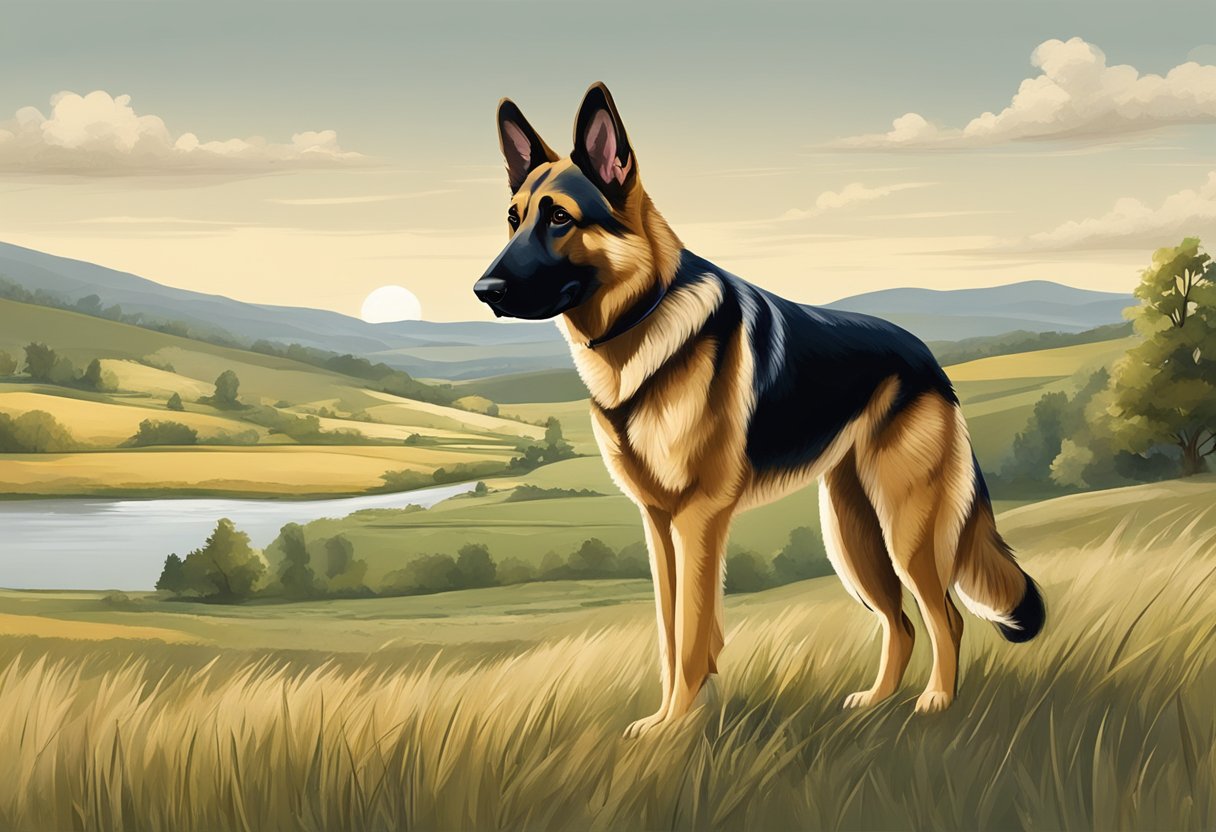Types Of German Shepherds
German Shepherds are one of the most popular breeds of dogs in the world. They are known for their loyalty, confidence, and intelligence. German Shepherds are often used as police dogs, search and rescue dogs, and as guide dogs for the blind. They are also popular as family pets.
The history and origin of the German Shepherd can be traced back to Germany in the late 1800s. The breed was developed by a German cavalry officer named Max von Stephanitz. He wanted to create a dog that was intelligent, loyal, and versatile. The German Shepherd was originally bred as a herding dog, but it quickly became popular for other purposes.
There are several different types of German Shepherds, each with its own unique characteristics. Some of the most common types include West German working line, East German DDR working line, American show line, and European show line. Each type has its own physical characteristics, temperament, and behavior. It is important to choose the right type of German Shepherd for your lifestyle and needs.
Key Takeaways
- German Shepherds are popular due to their loyalty, confidence, and intelligence.
- The breed was developed in Germany in the late 1800s by Max von Stephanitz.
- There are several different types of German Shepherds, each with its own unique characteristics.
History and Origin

The German Shepherd is a breed of dog that originated in Germany in the late 19th century. The breed was developed by Max von Stephanitz, a former cavalry officer, who sought to create an intelligent, versatile working dog that could be used for a variety of tasks. Today, the German Shepherd is one of the most popular dog breeds in the world, valued for its loyalty, intelligence, and versatility.
Max Von Stephanitz and the Breed Standard
Max von Stephanitz is considered the founder of the German Shepherd breed. In 1899, he founded the Verein f√ºr Deutsche Sch√§ferhunde (German Shepherd Dog Club), which served as the breed registry and standardization organization for the German Shepherd. Von Stephanitz believed that the breed should be developed as a working dog, and he worked to create a breed standard that emphasized the dog’s intelligence, loyalty, and versatility.
The breed standard established by von Stephanitz called for a dog that was medium-sized, with a strong, muscular build and a distinctive wolf-like appearance. The breed was to be intelligent, trainable, and capable of performing a wide range of tasks, including herding, guarding, and police work.
Development of Different Bloodlines
Over time, different bloodlines of German Shepherds developed, each with its own characteristics and strengths. Some bloodlines were developed for their herding abilities, while others were bred for their strength and courage. Today, there are several different types of German Shepherds, each with its own unique characteristics.
The West German Working Line German Shepherd is one of the most popular types of German Shepherds. This bloodline is known for its intelligence, trainability, and working ability. They are also known for their strong, muscular build and distinctive wolf-like appearance.
Other popular bloodlines include the East German Working Line German Shepherd, which is known for its courage and loyalty, and the American Show Line German Shepherd, which is bred for its appearance and temperament.
In conclusion, the German Shepherd is a versatile and intelligent breed of dog that was developed in Germany in the late 19th century. Max von Stephanitz, the founder of the breed, worked to create a dog that was loyal, intelligent, and versatile, and his efforts led to the creation of one of the most popular dog breeds in the world. Today, there are several different bloodlines of German Shepherds, each with its own unique characteristics and strengths.
Types of German Shepherds
German Shepherds are a popular breed for many reasons, such as their loyalty, intelligence, and versatility. There are different types of German Shepherds, each with unique characteristics that make them suitable for various tasks. Here are some of the most common types of German Shepherds:
American Show Line German Shepherd
The American Show Line German Shepherd is bred for conformation shows, which emphasize physical appearance rather than working ability. These dogs have a sloping back and a more angulated hindquarters than their working line counterparts. They also have a longer coat and a calmer temperament.
West German Working Line German Shepherd
The West German Working Line German Shepherd is bred for their working ability, such as police and military work. These dogs have a straighter back and a more balanced angulation between their front and hindquarters. They also have a shorter coat and a more energetic temperament.
East German DDR Working Line German Shepherd
The East German DDR Working Line German Shepherd is bred for their working ability, such as border patrol and search and rescue. These dogs have a straighter back and a more robust build than their West German counterparts. They also have a shorter coat and a more reserved temperament.
Czech Working Line German Shepherd
The Czech Working Line German Shepherd is bred for their working ability, such as personal protection and sport. These dogs have a straighter back and a more compact build than their West German counterparts. They also have a shorter coat and a more intense temperament.
European Show Line German Shepherd
The European Show Line German Shepherd is bred for conformation shows, similar to the American Show Line German Shepherd. These dogs have a sloping back and a more angulated hindquarters than their working line counterparts. They also have a longer coat and a calmer temperament.
In conclusion, each type of German Shepherd has unique characteristics that make them suitable for various tasks. It is essential to understand these differences when choosing a German Shepherd for a specific purpose.
Physical Characteristics
German Shepherds are known for their athletic and muscular build, with a wolf-like appearance. They are a large breed, standing at a height of 22 to 26 inches and weighing between 60 and 100 pounds. Their body structure is strong and well-proportioned, with a deep chest and powerful legs.
Coat Variations and Colors
German Shepherds come in a variety of coat colors and patterns. The most common coat colors are black and tan, black and cream, black and red, black and silver, solid black, gray, and sable. The sable color is a mix of black, brown, and gray, giving the dog a unique and striking appearance. Some German Shepherds have a saddle coat pattern, where the darker color is concentrated on their back and sides.
There are also several coat variations of the German Shepherd breed. The long-haired German Shepherd has a longer, silkier coat than the traditional short-haired variety. The white German Shepherd has a pure white coat, while the panda German Shepherd has a unique black and white coat pattern.
Size and Body Structure
The size and body structure of German Shepherds can vary depending on their bloodline and breeding. The West German Working Line German Shepherd is known for its muscular build and agility, while the East German DDR Working Line German Shepherd has a larger, stockier build.
Regardless of their bloodline, all German Shepherds have a strong and powerful body structure that makes them well-suited for a variety of tasks, including herding, search and rescue, and law enforcement. Their muscular build and wolf-like appearance make them an impressive sight to behold.
Temperament and Behavior
German Shepherds are known for their loyalty, confidence, obedience, and protective nature. They are intelligent and have a strong work ethic, making them suitable for a variety of roles such as family pets, service dogs, police dogs, herders, and guard dogs.
The Working Line German Shepherds
Working line German Shepherds are bred for their work ethic and high prey drive. They are energetic, agile, and have a strong desire to work. These dogs require a lot of exercise and training to keep them mentally and physically stimulated. They are ideal for people who are willing to provide them with a job to do.
The Show Line German Shepherds
Show line German Shepherds are bred for their appearance and conform to the breed standard. They are generally more laid back and less energetic than working line German Shepherds. They make great family pets and are suitable for people who want a loyal and protective companion.
German Shepherds can exhibit aggressive behavior if not trained and socialized properly. It is important to provide them with early socialization and training to prevent any unwanted behavior. They can make great companions for people who are willing to put in the time and effort to train and care for them properly.
In conclusion, German Shepherds are versatile dogs that can excel in a variety of roles. Whether you are looking for a family pet or a working dog, there is a German Shepherd that can meet your needs.
Health and Care
Common Health Issues
German Shepherds are generally healthy dogs, but like all breeds, they are prone to certain health issues. One of the most common health problems in German Shepherds is hip and elbow dysplasia, a genetic condition that affects the joints. This condition can cause pain and lameness, and can lead to arthritis later in life. Regular exercise and a balanced diet can help prevent this condition.
Another common health issue in German Shepherds is bloat, a life-threatening condition that occurs when the stomach fills with gas and twists on itself. This can cause the blood supply to the stomach to be cut off, leading to tissue death and shock. Symptoms of bloat include restlessness, drooling, and a distended abdomen. If you suspect your German Shepherd is suffering from bloat, seek veterinary attention immediately.
Skin allergies are also a common problem in German Shepherds. These allergies can be caused by a variety of factors, including food, environmental allergens, and parasites. Symptoms of skin allergies include itching, redness, and hair loss. Treatment for skin allergies may include medication, changes in diet, and regular grooming.
Diet and Exercise
German Shepherds require a balanced diet and regular exercise to stay healthy. A high-quality dog food that is appropriate for their age and activity level is essential. It is important to avoid overfeeding, as German Shepherds are prone to obesity, which can lead to joint problems and other health issues.
Exercise is also important for German Shepherds. They are an active breed that requires daily exercise to stay healthy and happy. A lack of exercise can lead to behavioral problems, such as destructiveness and aggression. Regular walks, runs, and play sessions can help keep your German Shepherd healthy and happy.
In summary, German Shepherds are generally healthy dogs, but like all breeds, they are prone to certain health issues. Regular exercise and a balanced diet can help prevent many of these issues. If you suspect your German Shepherd is suffering from a health problem, seek veterinary attention immediately.






